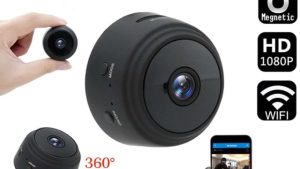Imagine stepping into a world where windows can transform at the touch of a button, seamlessly transitioning from clear to opaque. This seemingly magical phenomenon is made possible by the innovative technology of switchable film, a marvel of modern engineering that is revolutionizing the way we interact with our surroundings.
Switchable film, also known as smart film or privacy film, offers a dynamic solution to the age-old challenge of balancing privacy and natural light in interior spaces. This cutting-edge material is imbued with the remarkable ability to switch between transparent and frosted states with ease, providing instant privacy at the flick of a switch. The applications of switchable film are vast and varied, spanning from commercial offices to residential homes, where it adds a touch of enchantment to everyday living environments.
Properties of Switchable Film
Switchable film offers a remarkable ability to transition between opaque and transparent states, providing flexibility in controlling privacy and light transmission levels. This innovative material is known for its energy-efficient properties, as it can help regulate temperature by blocking or allowing sunlight to pass through, depending on the desired setting.
In addition to its dynamic transparency, switchable film is also characterized by its durability and longevity. Featuring a thin and lightweight design, this film can be seamlessly integrated into various surfaces without compromising structural integrity or aesthetic appeal. Its resistance to scratches and stains further enhances its usability in diverse applications.
Moreover, switchable film is designed to be user-friendly, with options for manual or automated control systems. Whether it’s for residential, commercial, or automotive purposes, this versatile material can be easily adjusted to meet specific preferences for privacy, security, and visual comfort. With its customizable features, switchable film continues to captivate users with its transformative capabilities.
Applications of Switchable Film
Switchable film has a wide range of applications in various industries. In the architectural sector, switchable film can be used to create dynamic windows that adjust transparency based on external light conditions. This not only enhances energy efficiency but also provides privacy and UV protection for occupants.
In the automotive industry, switchable film can be incorporated into car windows to offer instant tint adjustment, enhancing both comfort and safety for drivers and passengers. The ability to switch between transparent and opaque states with the press of a button provides flexibility and control over the amount of light entering the vehicle.
Switchable Film
In the retail setting, switchable film can be utilized for interactive displays that engage customers and create an immersive shopping experience. By incorporating touch-sensitive technology, these displays can showcase products in a visually appealing manner, attracting and retaining the attention of potential buyers.
Future Innovations in Switchable Film
One exciting area of future development in switchable film technology revolves around increased customization options. Researchers are exploring ways to enhance the film’s ability to switch between different opacities, colors, and patterns, opening up a world of possibilities for creative applications in architecture, automotive design, and interior decor.
Another promising direction for switchable film innovation is focused on improving energy efficiency. By incorporating smart sensors and responsive technologies, future iterations of switchable film may be able to automatically adjust opacity levels based on environmental conditions, such as sunlight intensity or room temperature. This adaptive functionality could lead to significant energy savings in buildings and vehicles.
Looking ahead, advancements in nanotechnology offer the potential for even thinner, lighter, and more durable switchable films. By further refining the materials and manufacturing processes involved, researchers aim to create ultra-thin films that maintain their switching capabilities over longer periods, contributing to the longevity and reliability of switchable film applications in various industries.





